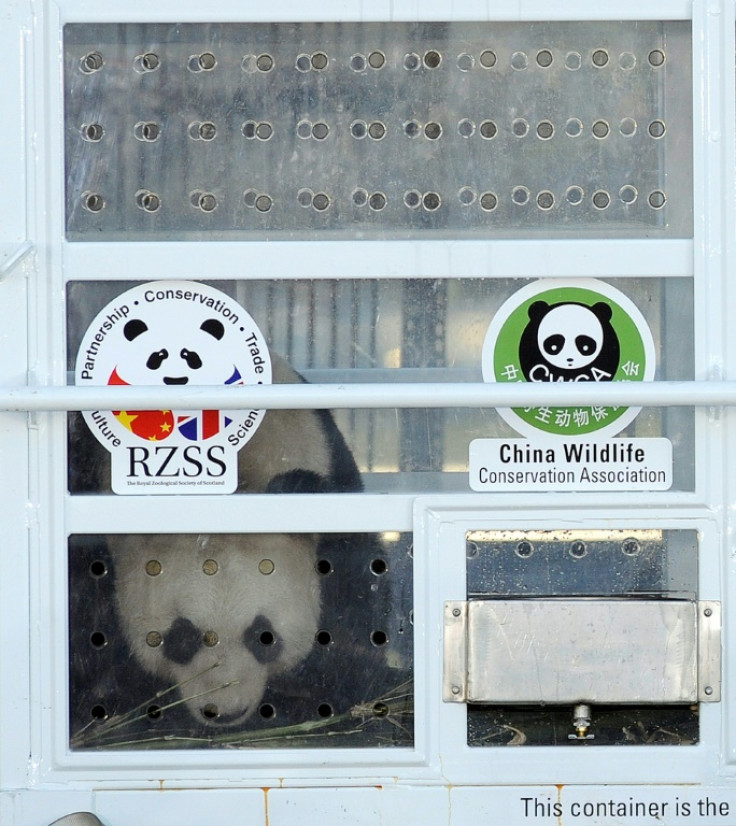
The UK's only giant pandas left Edinburgh for China on Monday after spending 12 cubless years in the Scottish capital.
It was hoped that female Tian Tian ("Sweetie") and male Yang Guang ("Sunshine") would produce a cub during their stay at Edinburgh Zoo.
But the bears, who even had a special black, white, grey and red tartan created in their honour, never succeeded in conceiving.
"It's sad that Tian Tian hasn't bred here, we would obviously really have liked her to have done so, but this is not unusual with giant pandas," said Simon Girling, head of veterinary services at the Royal Zoological Society of Scotland (RZSS).
"I think we're all quite sad to see them go, they are two lovely individuals, lovely characters, and we've got to know them really well."
The pandas were transported to the airport in metal crates and loaded into a cargo plane with a pallet of bamboo ahead of their flight back to China.
They will spend time in quarantine on arrival in China before being re-homed at a sanctuary in Chengdu, the capital of southwestern China's Sichuan province.
The pandas arrived at Edinburgh Zoo in December 2011 as part of a 10-year agreement between the RZSS and the China Wildlife Conservation Association, which was later extended by two years.
During their stay in Edinburgh, the popular pair even had a special tartan created in their honour, in black, white and grey representing their fur, and red to symbolise China.
But it was soon clear the two were not eager to breed.
The zoo and veterinarians from China made eight attempts at artificial insemination between the pair.
There was also a failed attempt to artificially inseminate Tian Tian in 2013.
The giant panda breeding programme was stopped in 2021 after Yang Guang was castrated after being treated for testicular cancer.
Giant pandas are notoriously difficult to breed in captivity, with bears losing interest in mating the natural way -- or simply not knowing how.
A female panda has a single oestrous cycle in the spring in which she is fertile for only 24 to 36 hours, according to the Pandas International conservation organisation.
"We have made a significant contribution to our understanding around giant panda fertility, husbandry and veterinary care -- which has been of real benefit to efforts to protect this amazing species in China," said RZSS chief executive David Field.
Attempts to breed pandas in captivity first began in China in 1955. In 1963, Ming Ming, the first giant panda bred in captivity, was born at the Beijing zoo.
Pandas are found in the wild in southwest China, along the Tibetan Plateau.








